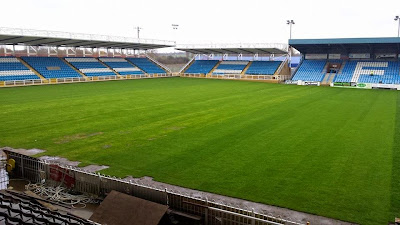John Newlove’s career had started as a very talented
three-quarter, alternating between centre and wing with ease. Signed from
Ackworth as a teenager, he swiftly made his mark in the first team, and within
months of turning professional helped Rovers win a Challenge Cup semi-final
against Leigh. He failed to make the team for the 1967 final at Wembley but history
shows his time would come. By the time the club got back to the final six years
later, John was club skipper and a typically stylish display saw him grab two
tries as Rovers romped home against Bradford. He also skippered the side at
Wembley the following year as Rovers failed to reproduce their best form
against Warrington.
 |
| John Newlove, Wembley 1973 |
It was between those two finals that coach Fox
experimented with the possibility of moving Newlove to stand-off. Although he
was initially reluctant to adapt to this new role within the team, John grew
naturally into the stand-off position, half-back partner to first Peter Banner
then Dale Fennell as Rovers became a real power within the game. His
intelligence and ability to read the game allowed John to have much more of an
influence over the team than was possible at centre, and his eye for a gap and
penchant for interceptions became hallmarks of his game.
Although he was a natural leader, John gave up the
captaincy in 1975 and handed over the responsibility to Vince Farrar, believing
it was negatively affecting his game. When it came to Rovers’ Championship year
in 1977, it was a great disappointment that Newlove suffered an injury which
kept him out of the side in the run in to securing the title. The following
season John then enjoyed a well-earned benefit year, but soon after that he was
recruited by a free-spending Hull FC side who were beginning to rebuild. He
joined ex-Rovers Charlie Stone, Vince Farrar and Graham Bray at the Boulevard.
With Jimmy Thompson and Keith Bridges having left for Bradford, this
represented an enormous talent exodus from Post Office Road. It came as little surprise
that Rovers were relegated the season Newlove left in 1979.
John Newlove played twelve seasons in the first team
at Featherstone covering a mammoth 381 games, 124 of them at stand-off, and the
rest as a three-quarter. His 147 tries still makes him Rovers’ second highest
try scorer ever after Don Fox. His contribution to the club’s cause was not at
an end however, as all three of his sons, Shaun, Paul and Richard all went on
to represent Featherstone Rovers. Between them, father and sons, they played
650 games and scored 341 tries. Some record.






